Léa Devaere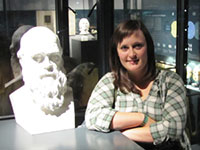 UMR 8217 Géosystèmes CNRS-Université LILLE 1
UMR 8217 Géosystèmes CNRS-Université LILLE 1
F59655 Villeneuve d'Ascq
France
Léa Devaere is a french PhD student at the University of Lille 1 dedicated to the study of early Cambrian Small Shelly Fossils (SSFs). She graduated her B. Sc. in Geology and her M. Sc. in palaeontology from the University of Lille 1. She is now finishing her PhD Thesis on the skeletal microfossils of the early Cambrian of Montagne Noire and their chronostratigraphic, palaeogeographic and palaeobiologic significance. She spent the first year of her PhD at the Free University of Berlin to work on SSFs systematic. Her work focuses on the biostratigraphic subdivision of the early Cambrian based on SSFs, especially in Montagne Noire (Southern France) and on the stratigraphy and paleobiogeography of the area. She is also interested in taphonomy of SSFs mainly in the phosphatic preservation of hyoliths digestive tracts. Part of her work consists on the study of early Cambrian outcrops of Sonora (Mexico) and their sedimentology and SSFs content. After her PhD thesis, she will further work on the early Cambrian microfaunas of Sonora and on the relation between SSFs and biofacies and chemostratigraphy.
![]()
Sébastien Clausen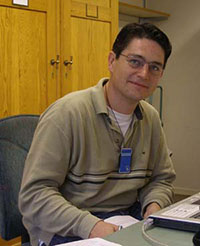 UMR 8217 Géosystèmes CNRS-Université LILLE 1
UMR 8217 Géosystèmes CNRS-Université LILLE 1
F59655 Villeneuve d'Ascq
France
Sébastien Clausen is a French paleontologist who graduated and completed his PhD at the University of Lille where he is lecturer. His research is mainly dedicated to the evolution of ecosystems during early-mid Cambrian times with special interest in echinoderms community and associated skeletonized microfossils. He specialized in the study of disarticulated echinoderm remains, which are particularly abundant in Cambrian times and still poorly documented. His palaeobiological studies are aimed at demonstrating how important this material is for the understanding of the early echinoderm diversification. Field-geologist, he develops a multidisciplinary approach mainly based on paleontology and sedimentology.
![]()
Michael Steiner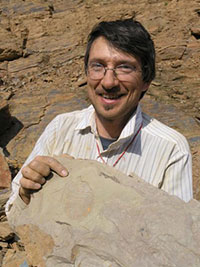 Department of Earth Sciences
Department of Earth Sciences
Freie Universität Berlin
Malteserstrasse 74-100
Haus D
Berlin, 12249
Germany
Michael Steiner is a palaeobiologist at Freie Universität Berlin with strong commitment to the Ediacaran and Cambrian biosphere and here especially the spatial and temporal distribution of Neoproterozoic / Cambrian phosphatized small shelly faunas and Cambrian invertebrate embryos. His PhD focused on Ediacaran and Cambrian mega-algae of South China. Currently he is working on the application of nanofocus- X-ray computed tomography (nCT) to the study of developmental series of phospatized embryos and hatchlings in order to recognize diagenetic artefacts and primary cellular structures in embryos. Previously he worked at the Geoscience department of TU Berlin and was a Humboldt Foundation Feodor-Lynen scholar at Charles University Prague (1995-1997), studying Middle Cambrian fossil assemblages of the Barrandian. Since more than 20 years he carried out research with Chinese cooperation partners on Cambrian faunas and biostratigraphy. He investigated numerous shale-hosted soft-bodied fossil lagerstätten in the early Cambrian of South China and the Middle Cambrian of North America and Bohemia and their taphonomy. Short-term cooperation projects and field excursions to Precambrian-Cambrian outcrops in Namibia, Kazakhstan, Mongolia, and Australia complement his experience with Precambrian- Cambrian palaeobiology.
![]()
J. Javier Álvaro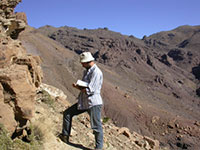 Centro de Astrobiología (CSIC/INTA)
Centro de Astrobiología (CSIC/INTA)
Ctra. de Torrejón a Ajalvir
km 4
28850 Torrejón de Ardoz
Spain
J. Javier Álvaro mainly works on Neoproterozoic and Early Palaeozoic microbial communities, sedimentology and trilobites. He got a PhD from the University of Zaragoza (Spain) in 1994. As assistant professor in the University of Lille I (1999-2004; France), he participated in the development of the Department “Palaeozoic Palaeontology and Palaeogeography”. In the Centre of Astrobiology, he is participating in several projects focused on Precambrian and Cambrian extremophile environments. He is voting member of the International Subcommissions on Ediacaran and Cambrian Stratigraphy and his research is currently adapted to stratigraphic applications.
![]()
Daniel Vachard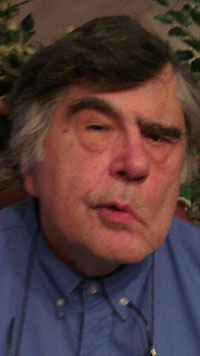 UMR 8217 Géosystèmes CNRS-Université LILLE 1|
UMR 8217 Géosystèmes CNRS-Université LILLE 1|
F59655 Villeneuve d'Ascq
France
Daniel Vachard is a Researcher at the French National Centre of Scientific Research (CNRS) with the UMR 8217 Géosystèmes of the University of Lille 1 (France). He has 40 years of experience in the palaeontology and biostratigratigraphy of the Palaeozoic calcareous microfossils. His PhD thesis (1974) was a study of all the Palaeozoic of Montagne Noire (southern France), and his Doctorate of Sciences at Dijon University (1980) concerned the Carboniferous-Permian biostratigraphy of Afghanistan. His work deals mainly with five topics: (1) Palaeozoic smaller foraminifers; (2) Fusulinids; (3) Palaeozoic bone fide and incertae sedis algae; (4) Carbonate microfacies; and (5) Carboniferous-Permian biotratigraphy and palaeobiogeography. Daniel has contributed to the development of reference scales for numerous Carboniferous-Permian regions in the world (e.g., southern France, northern France, Carnic Alps, Morocco, Tunisia, Libya, Oman, Iran, Afghanistan, China, Thailand, Indonesia, New Mexico and Mexico). His current interest in the Cambrian re-started when he became supervisor, with Dr. Sébastien Clausen, of the PhD thesis of Miss Léa Devaere.

